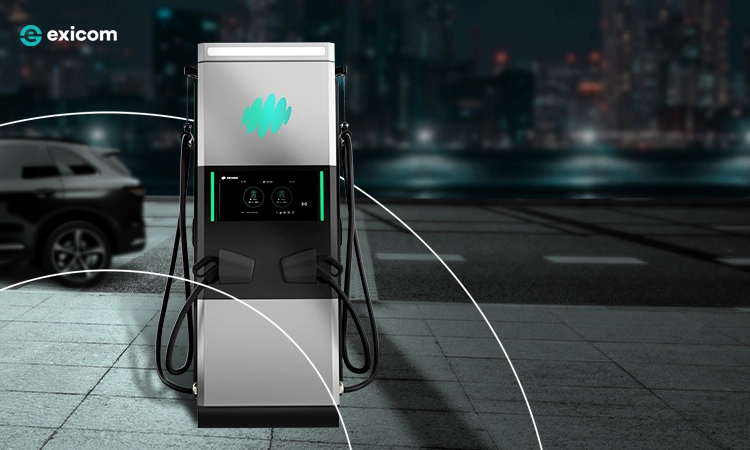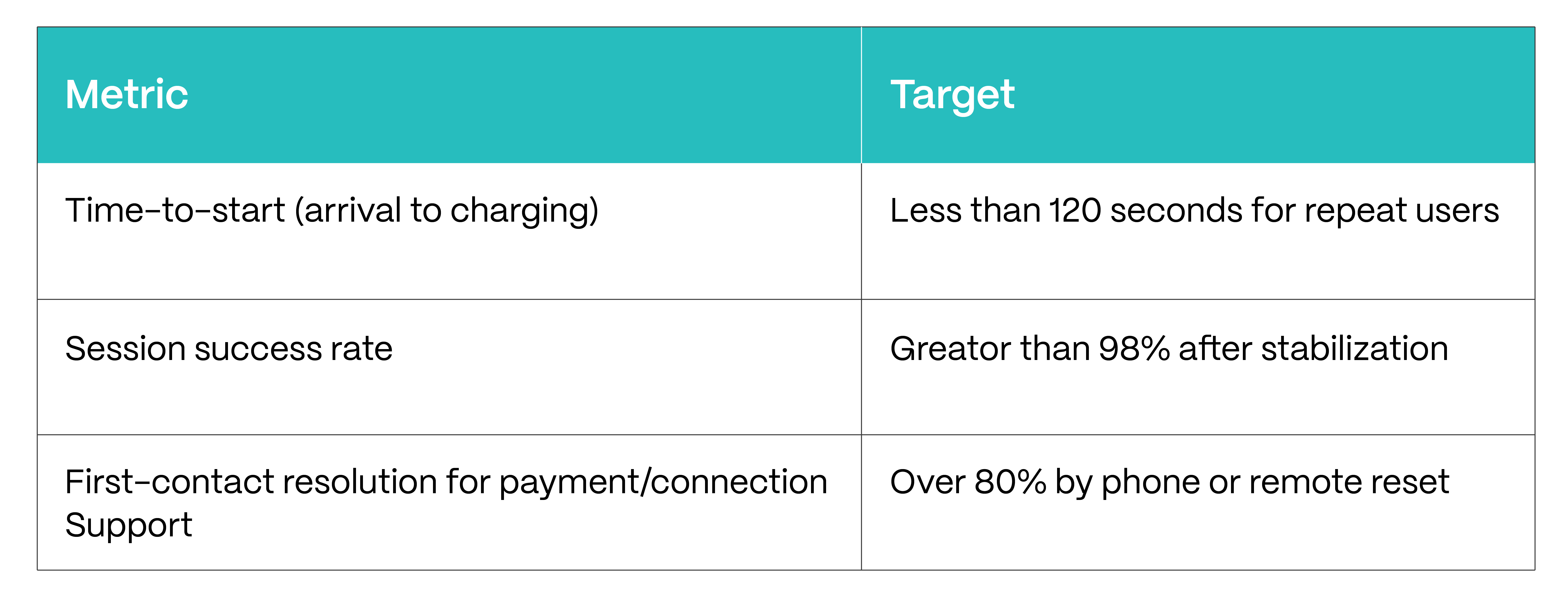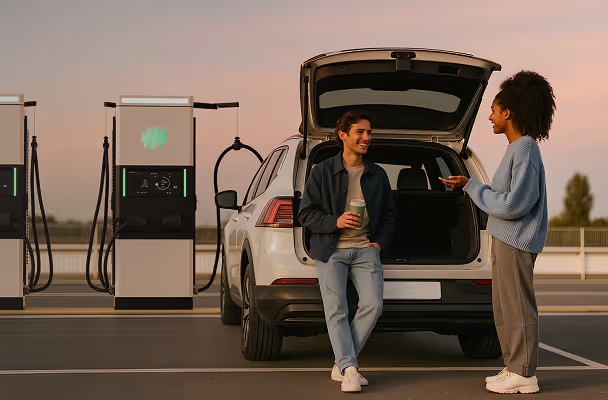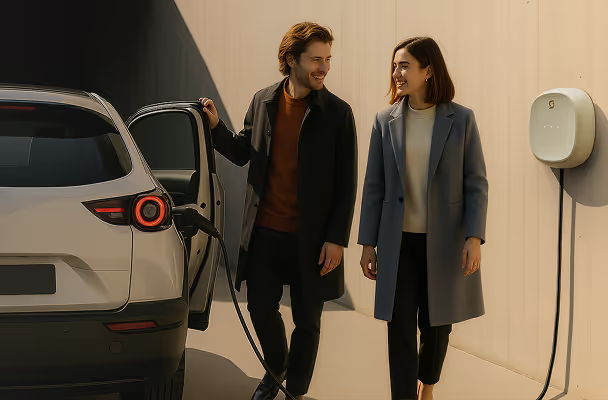Profitability by Design: The Charger Technologies That Cut OPEX for Charge Point Operators Operators in Southeast Asia

In 2024, EV sales in Southeast Asia (SEA) increased by nearly 50 percent, with EVs now representing 9 % of all new car sales, as reported by IEA. Projections indicate an expansion from approximately 14,330 charging units in 2025 to more than 43,000 by 2030: a robust compound annual growth rate of 24.6 percent. This regional momentum is being reinforced by large-scale EV infrastructure development. Indonesia’s PLN, for example. expanded its public charging network by 299% to more than 3,200 units. Vietnamese companies are preparing to roll out 100,000 stations backed by over USD 1.2 billion in investment. Thailand already operates 11,600 chargers and will easily meet it’s 12,000 by 2030.
But numbers alone do not tell the full story.
The profitability of EV charging stations is affected by low utilization and high OPEX
The profitability of an EV charging station, especially in the SEA region, doesn’t depend much on the number of chargers deployed. It depends more on whether the deployed chargers are being utilized well enough to generate revenue without increasing operational expenses.
Let us explain the current dichotomy through an example.
In 2024, Indonesia’s public chargers tripled to 3,233 units, but on average, each charger was used less than once a day. On the other hand, 64% of EV users in the same country said that they had difficulty in finding an EV charger that works. These 2 contrasting realities make one thing clear. Issues in EV charger are neither caused by lack of demand, nor due to lack of supply. It’s being caused due to factors within the EV charging ecosystem.
Let’s look at the primary causes.
3 things are affecting EV charger utilization in South-East Asia
An EV charger, when deployed, must survive the environment, support integrations with grids and stay connected with minimal O&M. But this doesn’t always happen in the SEA region.
1. Heat, humidity and coastal corrosion damage EV chargers
EV chargers installed in coastal regions like Bali, Da Nang, and Batangas often see prolonged extreme heat. Malaysia and the Philippines experience high humidity year-round too. Research shows that increasing relative humidity to around 75% raises corrosion rates significantly, and humidity beyond 80% is common here. Coastal conditions beyond 35°C double failure rates pf electrical hardware, when compared to inland areas. Moisture ingress and condensation cause sensor faults, insulation degradation and intermittent errors, rendering the EV charger non-functional.
2. Grid constraints increase charger downtime
Electrical grids in the SEA region are constrained. For instance - Philippines alone has suffered around 107.5 million consumer hours lost due to power outages. Grid instability, frequent outages, voltage fluctuations across geographies in SEA are increasing charger downtime.
3. Lack of interoperability leads to aborted charging sessions
In a survey conducted by EY in Singapore, 26% of potential EV buyers conveyed that charging interoperability is a major concern. This is much higher than the global average of 14%. 74% Indonesians use mobile wallets, but users highlighted that many EV chargers don't accept them, leading to payment issues while attempting to charge. Users must register on various apps, keep multiple cards handy and take many subscriptions. This lack of interoperability is not just inconvenient for EV users. It also makes CPOs lose out on customer share.
The second concern at hand, while creating a profitable EV charging station, is unexpected, unprecedented operational expenses (OPEX) that chips away at profits.
The increase in OPEX is due to 2 main things
Rising operating expenses are driven primarily by factors that impact both maintenance and energy costs. Understanding these key drivers is essential to managing and reducing overall OPEX effectively.
1. Charger failures need costly service visits
Service visits to repair EV chargers are expensive, especially when they are located on coastal routes or archipelago. In Indonesia for example, fast-charging prices are capped at USD 0.16/kWh, but real operating costs in harsh locations often exceed that.
2. Electricity bills are high due to grid constraints
Grid upgrades and load management are a costly affair in the SEA region. Indonesian island grids often require feeder upgrades before large DC fast deployments; PLN’s rapid roll-out is notable but localized grid upgrades remain necessary for corridor charging. In the Philippines, planners must design for recurring supply interruptions; in Vietnam, staged permitting and local capacity limits mean CPOS should price and size sites conservatively. In some markets demand charges or time-of-use pricing can make unmanaged EV charging uneconomic. An EV charging station that draws large instantaneous power without peak management can incur outsized electricity bills.
For addressing these challenges, there is a need to adopt modern charging capabilities. And how do we do that? Let’s look at the EV chargers we’re using in the first place.
Charger design is key to increase utilization and reduce OPEX
Weather-resistant design reduces risk of damage to chargers
- EV Chargers in SEA face significant heat, humidity and corrosion throughout the year. A weater resistant architecture thus becomes necessary. This can be achieved by using IP65-rated enclosures, which protects against dust and water ingress.
- For coastal deployments, special fasteners and anti-corrosion coatings should be used on exposed metalwork.
- Liquid cooling in high-power DC fast chargers is essential to improve thermal performance and extend component life.
These measures increase upfront costs but materially reduce replacement and service frequency in the first 3–5 years.
DLM overcomes grid constraints
EV chargers in the SEA region must be equipped with dynamic load management (DLM) to distribute power efficiently. DLM helps prevent grid overloads and avoids costly demand charges by smoothing out sudden power spikes. This is especially useful for tourist corridors and islands with limited feeder capacity, or places where browounts are frequent.
DLM also allows more chargers to share the same connection, making better use of limited grid capacity. When combined with battery storage and solar panels, DLM can provide backup during short outages and cut energy costs by shaving peak demand.
Here’s a short deployment checklist that might be useful:
- Specify DLM that supports per-plug power limits and configurable priority profiles (fleet vs ad-hoc users).
- Integrate DLM with site telemetry and billing to avoid disputes over curtailed sessions.
- When possible, pair DLM with a battery + solar design sized for 10–30% of expected peak to absorb spikes and provide short holdover during brownouts.
- Test DLM behaviour under local tariff regimes and simulated feeder constraints before full roll-out.
Interoperability and good UX improves customer experience hence utilization
Interoperability and payment stacks determine whether users can actually start a session. CPOs must treat payments and roaming as part of availability engineering, not an optional extra.
For standardizing transaction communication with the backend, achieving OCPP compliance is a necessary step. Multiple options like credit cards, e-wallets and RFID cards should be available, to ensure hassle-free payments.
Some considerations for payment integrations in different SEA countries:
- Indonesia: GoPay/OVO integrations are common; but acceptance testing while choosing a charger should include each major wallet API.
- Vietnam: QR-first payments and local QR standards require a dedicated integration track during rollout.
- Philippines: NFC/RFID and card fallbacks remain important for tourists and short-term rentals
Streamlining the payment process will help improve station utilization and reduce user friction.
To further boost customer trust, CPOs should publish real-time availability and offer guaranteed uptime SLAs. Here are some north-star metrics in this regard.

Another important aspect is UX. Precisely how important? Well, if we look at general statistics, 88% of consumers say they won’t use a certain service if they do not like the UX. Mere Infrastructure scale up is not a guarantee of success. EV drivers feel at-ease using this infrastructure. For example, Thailand welcomed 6.73 million Chinese tourists in 2024, so it’s natural that an EV charger with multilingual UX that supports Chinese languages will see higher usage over the ones that don’t. User-friendly interfaces ease frustration and build user trust, both for locals and visitors.
Remote management reduces OPEX
Equipment failures in manufacturing and facilities of the SEA region cost up to estimation of RM 15-20 billion annually.
EV Chargers enabled with remote management (IoT-based monitoring and AI-driven predictive maintenance) forecast potential failures before they occur. Data from the Economic Research Institute for ASEAN (Association of Southeast Asian Nations) and East Asia (ERIA) shows that predictive maintenance can reduce maintenance costs by 15-45% and decrease downtime by up to 60% in tropical operating conditions common across Southeast Asia. Over-the-air OTA updates can fix software remotely. This reduces OPEX in terms of both repair costs and manpower.
In Southeast Asia, profitability does not come from cheap hardware alone. It comes from chargers that are rugged, grid-smart, interoperable and remotely manageable.
By commitment to reduce the operator’s burden, Exicom opens the doors for operators to develop compelling, innovative, scalable and profitable EV charging networks for a better future.
Explore our charging solutions here.
Glossary
- EV (Electric Vehicle): A vehicle powered by electricity stored in rechargeable batteries instead of petrol or diesel engines.
- EV Charging Station (EVSE): Infrastructure that supplies electrical energy for charging EV batteries, including AC and DC fast chargers.
- Battery Energy Storage System (BESS): Technology that stores electricity (from grid or renewables) for use in stabilizing EV charging supply.
- Solar Power / Solar PV: Photovoltaic systems that convert sunlight into electricity, often paired with EV charging in grid-constrained areas.
- Microgrid: A localized, small-scale power network that can operate independently or in coordination with the main grid to support EV charging.
- Dynamic Load Management (DLM): A smart system that distributes power efficiently among multiple chargers to prevent grid overload.
- OCPP (Open Charge Point Protocol): A global communication standard that enables interoperability between EV chargers and backend management systems.
- Interoperability: The seamless functioning of different EVs, chargers, and payment systems across networks.
- Over-the-Air (OTA) Updates: Remote software updates that allow EV chargers to be maintained or upgraded without physical intervention.
- IP65 Rating: An international standard showing equipment is dust-tight and protected against water jets, important for weather-resistant EV chargers.
References
Frequently Asked Questions
Lorem ipsum dolor sit amet, consectetur adipiscing elit, sed do eiusmod tempor incididunt ut labore et dolore magna aliqua. Ut enim ad minim veniam, quis nostrud exercitation ullamco laboris nisi ut aliquip ex ea commodo consequat. Duis aute irure dolor in reprehenderit in voluptate velit esse.
Lorem ipsum dolor sit amet, consectetur adipiscing elit, sed do eiusmod tempor incididunt ut labore et dolore magna aliqua. Ut enim ad minim veniam, quis nostrud exercitation ullamco laboris nisi ut aliquip ex ea commodo consequat. Duis aute irure dolor in reprehenderit in voluptate velit esse.
Lorem ipsum dolor sit amet, consectetur adipiscing elit, sed do eiusmod tempor incididunt ut labore et dolore magna aliqua. Ut enim ad minim veniam, quis nostrud exercitation ullamco laboris nisi ut aliquip ex ea commodo consequat. Duis aute irure dolor in reprehenderit in voluptate velit esse.
Lorem ipsum dolor sit amet, consectetur adipiscing elit, sed do eiusmod tempor incididunt ut labore et dolore magna aliqua. Ut enim ad minim veniam, quis nostrud exercitation ullamco laboris nisi ut aliquip ex ea commodo consequat. Duis aute irure dolor in reprehenderit in voluptate velit esse.
Lorem ipsum dolor sit amet, consectetur adipiscing elit, sed do eiusmod tempor incididunt ut labore et dolore magna aliqua. Ut enim ad minim veniam, quis nostrud exercitation ullamco laboris nisi ut aliquip ex ea commodo consequat. Duis aute irure dolor in reprehenderit in voluptate velit esse.



